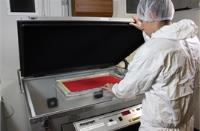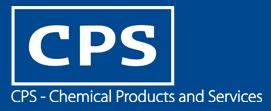 Add My Company
Add My Company
Sign In

Factors to consider when selecting an exposure system:
The quality of the UV light- Diazo, Dual Cure and Photopolymer photostencils are only sensitive to Ultra Violet light with a wavelength from 320 to 430 nanometers. It is therefore very important to select a light source that has a spectral output in this range. Avoid light sources that also produce large amounts of Infra Red (IR) as this heat energy will quickly cause the stencils to fuse. If in doubt, check the spectral output with the equipment manufacturer to ensure that it is compatible.
The power of the light- for conventional contact exposure, choose the most powerful lamp you can. The more powerful the lamp, the further it can be positioned from the stencil.
The distance from the stencil- the distance from the lamp to the stencil has a big impact on exposure time, as the intensity of the light reduces very quickly the further it has to travel. For example a stencil requiring a 30 second exposure at 1.0 m distance would increase to 900 seconds at 2.0m. Importantly though, the further away you can position the light source from the screen, the less undercutting you get at the image edges.
The angle of the light- ideally the light should enter the stencil at an angle of 90° to the positive as this will give no undercutting of the image. Be aware though that the closer the lamp is to the image, the more acute the angle will become at the edges of the image. Ultimately the size of the screen and the quality of the print you require will determine the optimum distance you should use. As a rule of thumb, the absolute minimum distance should be the diagonal of the screen.
The best compromise:
For conventional contact exposure of Diazo and Dual Cure stencils (such as CPS Ultra Cap EZ and CPS Ultra Coat 550) up to 1x1m a 5 Kw metal halide with a Gallium Iodide doped Diazo bulb (365, 405 & 418 nanometres) at a distance of 1.5 metres is a good combination. For screens bigger than 1m² then a more powerful lamp at a greater distance may be required. For small screens then a less powerful lamp at a shorter distance can be used.
If you only use photopolymer stencils, (such as CPS Ultra Coat HB) a specific ‘Photopolymer’ Iron Iodide doped bulb can be used as this emits a shorter wavelength (with enhanced output at 360 to 380 nm) than a Diazo bulb. If you use both Diazo/Dual Cure and Photopolymer stencils, then a universal bulb is the best compromise. Whichever system is selected, a UV sensitive light integrator will ensure consistency of exposure.
Other factors to consider
Mesh - Dyed (anti-halation) mesh will stop a lot of the light reflection/refraction during exposure to give better resolution and definition at optimum exposure, but you may need to increase your exposure time by as much as 100% compared to white mesh.
Vacuum frames- it is essential that the exposure frame gives you perfect contact between the film positive and the stencil, so a good vacuum and seal is very important.
#ScreenprintingTopTip: If you use a free standing exposure system, paint the walls black to reduce unwanted reflections that could cause undercutting.
Film positives- the quality of the positive you use will have a significant effect on the quality of the final print and any pixilation or imperfection on the image will be reproduced by the stencil. We recommend using quality Lith film positives for high resolution applications.
#ScreenprintingTopTip: If you are unsure which is the emulsion side on your film positive you can use a sharp knife to gently scratch a small area in the image which can be spotted out later.
Take care when using low cost ink jet or laser printer positives as these often have quite a low UV/Blue density and the stencils will need to be under exposed to prevent burn through. Please note that overloading ink jet film positives to increase their UV density may result in them sticking to the stencil during vacuuming.
Computer to screen
There are two main Computer To Screen (CTS) processes that are used today in screenprinting; (i) direct digital exposure of the screen using UV light and (ii) digital imaging of a UV resist directly onto the screen followed by a blanket UV exposure. In these groups there are several different types of CTS systems including laser exposure, Digital Mirror Device/LED, ink jet and even laser ablation and each one has its own advantages and disadvantages.
The choice of which system you select will depend on the size of the screens, the number of screens required per hour, the print detail and the durability required from those screen.
It is also important to match your choice of photostencil with your CTS system to get the optimum result. In general, most Diazo or Dual Cure photostencils (such as CPS Ultra Coat 200 or CPS Ultra Coat 535) can be used for small to medium sized CTS applications, however for large screens an ultra-fast projection speed photopolymer emulsion (such as CPS Ultra Coat CTS - L or CPS Ultra Coat Neptune) will probably be required.
Summary
There is no universal exposure system that will suit all screenprinting applications, as the requirements for producing stencils for a touch screen application are miles apart from those for printing giant flags or banners. Carefully consider all of the above factors before making your choice, as exposure is the most important step in determining the quality and durability of the screens being produced.
For more information on Choosing the right exposure system talk to CPS - Chemical Products and Services
Enquire Now
More related to Choosing the right exposure system
List your company on FindTheNeedle.
